Advertisements
Advertisements
Question
Complete the hexagonal and star shaped rangolies (see the given figures) by filling them with as many equilateral triangles of side 1 cm as you can. Count the number of triangles in each case. Which has more triangles?
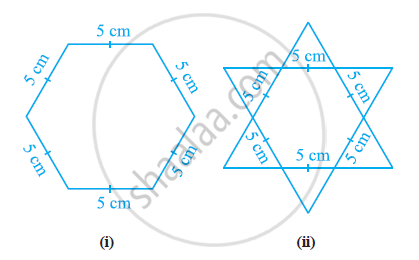
Solution
It can be observed that hexagonal-shaped rangoli has 6 equilateral triangles in it.
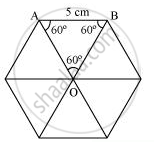
`"Area of "ΔOAB = sqrt3/4"(side)"^2`
`= sqrt3/4(5)^2`
`= sqrt3/4(25)`
`= (25sqrt3)/4cm^2`
`"Area of hexagonal-shaped rangoli "=6xx(25sqrt3)/4=(75sqrt3)/2cm^2`
`"Area of equilateral triangle having its side as 1cm "=sqrt3/4(1)^2=sqrt3/4cm^2`
`"Number of equilateral triangles of 1 cm side that can be filled in this hexagonal-shaped rangoli "=((75sqrt3)/2)/(sqrt3/4)=150`
Star-shaped rangoli has 12 equilateral triangles of side 5 cm in it.
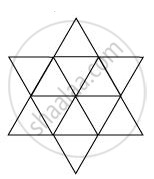
`"Area of star-shaped rangoli "=12xxsqrt3/4xx(5)^2=75sqrt3`
`"Number of equilateral triangles of 1 cm side that can be filled in this star-shaped rangoli "=(75sqrt3)/(sqrt3/4)=300`
Therefore, star-shaped rangoli has more equilateral triangles in it.
APPEARS IN
RELATED QUESTIONS
Show that in a right angled triangle, the hypotenuse is the longest side.
In the given figure, ∠B < ∠A and ∠C < ∠D. Show that AD < BC.

In the following figure ; AC = CD; ∠BAD = 110o and ∠ACB = 74o.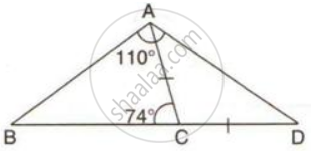
Prove that: BC > CD.
"Caste inequalities are still prevalent in India." Examine the statement.
"Issues of caste discrimination began to be written about in many printed tracts and essays in India in the late nineteenth century." Support the statement with two suitable examples.
In a triangle ABC, BC = AC and ∠ A = 35°. Which is the smallest side of the triangle?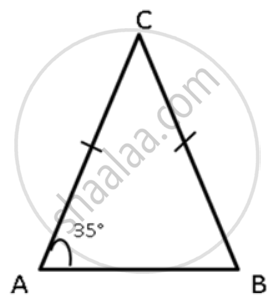
Prove that the perimeter of a triangle is greater than the sum of its three medians.
D is a point on the side of the BC of ΔABC. Prove that the perimeter of ΔABC is greater than twice of AD.
In ΔABC, BC produced to D, such that, AC = CD; ∠BAD = 125° and ∠ACD = 105°. Show that BC > CD.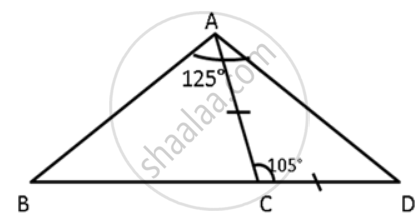
Prove that in an isosceles triangle any of its equal sides is greater than the straight line joining the vertex to any point on the base of the triangle.
